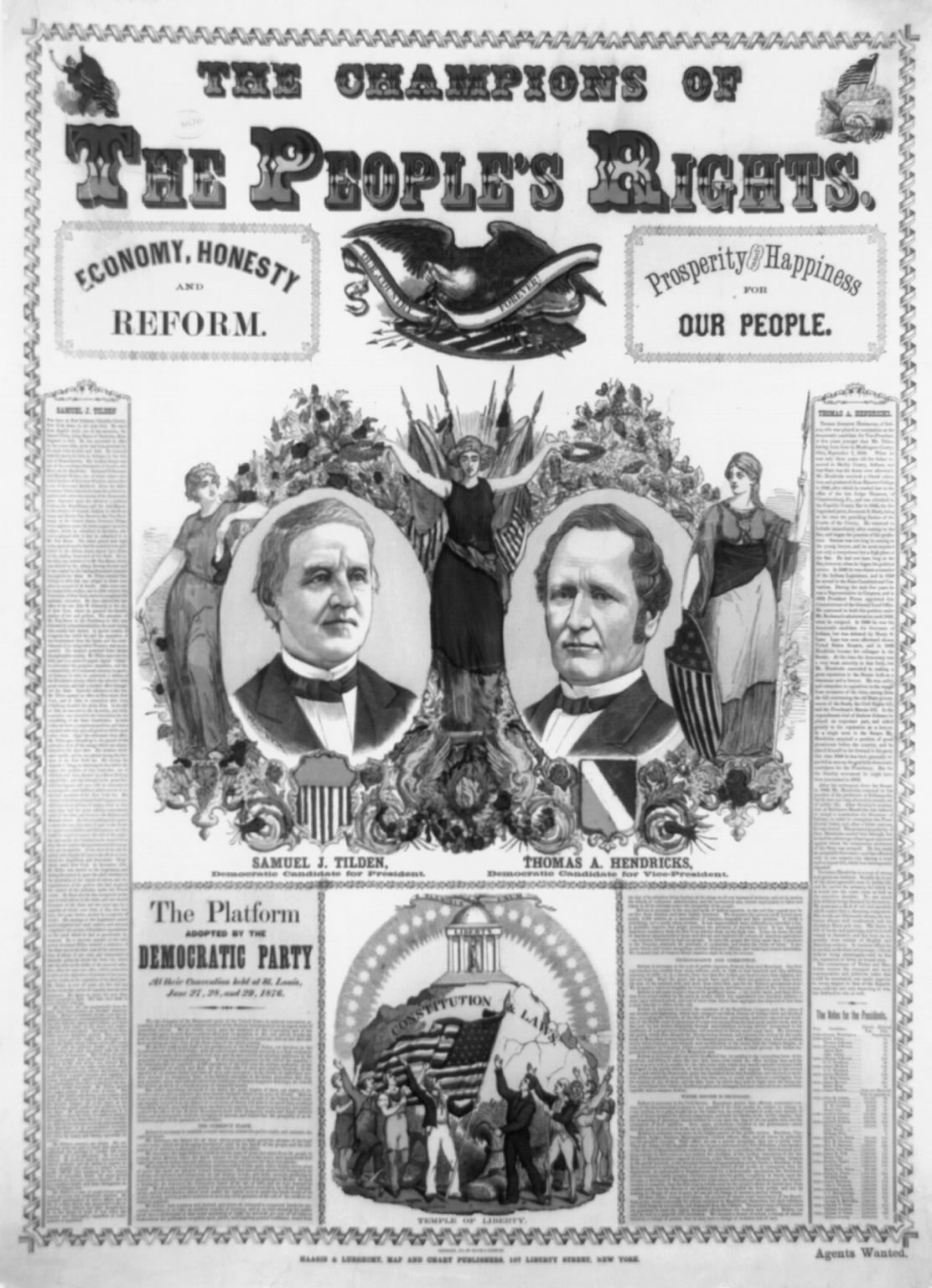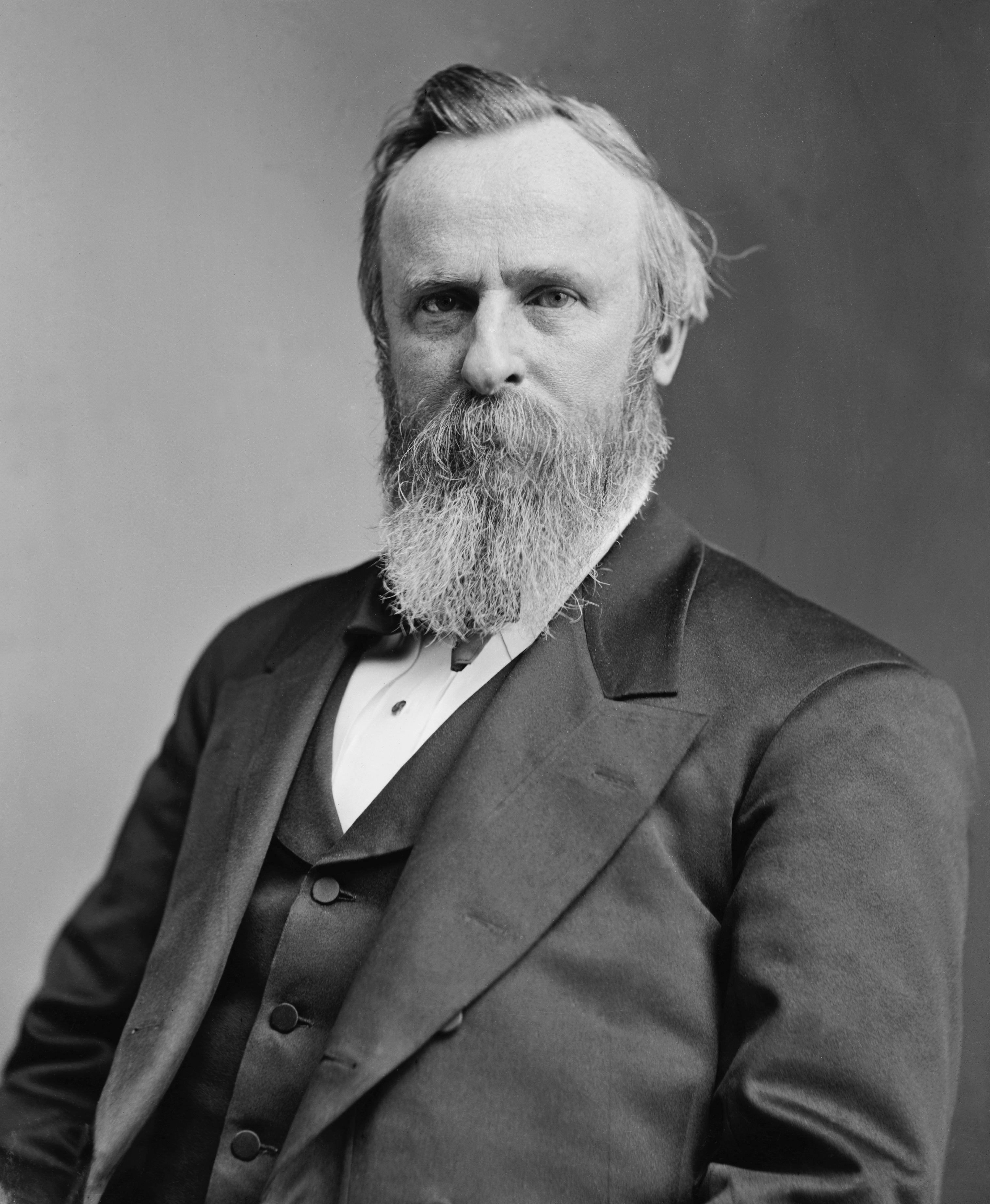Disputed Election of 1876
The death knell of the Republican dream
In the presidential election of 1876, Democrat Samuel Tilden ran against Republican Rutherford B. Hayes. At the end of election day, no clear winner emerged because the outcomes in South Carolina, Florida, and Louisiana were unclear. Both parties claimed victory in those states, but Republican-controlled “returning” boards would determine the official electoral votes.

Republicans and Democrats rushed to those three states to watch and try to influence the counting of the votes. The returning boards determined which votes to count and could throw out votes, if they deemed them fraudulent. The returning boards in all three states argued that fraud, intimidation, and violence in certain districts invalidated votes, and they threw out enough Democratic votes for Hayes to win. All three returning boards awarded their states’ electoral votes to Hayes.
Meanwhile in Oregon, a strange development added that state to the uncertain mix. Hayes won the state, but one of the Republican electors, John W. Watts, was also postmaster, and the US Constitution forbids federal officeholders from being electors. Watts planned to resign from his position in order to be a Republican elector, but the governor of Oregon who was a Democrat, disqualified Watts and instead certified a Tilden elector.

Electors cast their ballots in state capitals on December 6, 1876. Generally, the process went smoothly but in four capitals—Salem, Oregon; Columbia, South Carolina; Tallahassee, Florida; and New Orleans, Louisiana—two sets of conflicting electors met and voted so that the US Congress received two sets of conflicting electoral votes. At this point, Tilden had 184 electoral votes while Hayes had 165 with 20 votes still disputed.
The Constitution stipulates that the electoral votes be directed to the President of the Senate who was Republican Thomas W. Ferry. Although Republicans argued that he had the right to decide which votes to count, Democrats disagreed and argued that the Democratic majority in Congress should decide. A compromise was reached, and on January 29, 1877, the Electoral Commission Act established a commission of five senators (three Republicans, two Democrats), five representatives (three Democrats, two Republicans), and five Supreme Court justices (two Republicans, two Democrats, and one independent) to decide which votes to count and resolve the dispute. However, the independent Supreme Court justice refused to serve on the commission and was replaced by a Republican justice.

Although Hayes did not initially support the commission, he changed his mind because it would enhance the legitimacy of the eventual winner. The commission voted 8 to 7 to award the electoral votes from South Carolina, Florida, and Louisiana (and one from Oregon) to Hayes. However, Democratic members of Congress threatened to prevent the count of electoral votes and delay the resolution of the election with frequent adjournments and filibusters. With the threat of delay, Democrats hoped to win some concessions from Republicans.
Two issues interested Democrats—restoring their control of governments, and thus white supremacy, in the South (and removing the last of the federal troops) and a federal subsidy for railroads. However, it is doubtful that Hayes, his supporters, and Democrats reached any sort of deal beyond what Hayes promised to do in his letter of acceptance. Samuel J. Randall, the Democratic Speaker of the House, realizing that creating chaos would backfire on the Democrats, finally ruled the filibusterers out of order and forced the completion of the count in the early hours of March 2, 1877. With 185 votes to Tilden's 184, Hayes was declared the winner two days before he was inaugurated.

While Hayes strongly supported African Americans’ right to vote and protection of their civil rights, he had little influence in the South. By the time he took office, the only federal troops still in the South protecting Republican governments were limited to small areas surrounding state houses in the capitals of New Orleans and Columbia. Hayes insisted that Democrats in South Carolina and Louisiana pledged to uphold the civil and voting rights of black and white Republicans. Once the Democrats agreed, Hayes pulled the remaining federal troops out of the South. And white southerners quickly turned their backs on their pledges, systematically disenfranchising black voters through poll taxes, literacy tests, and intimidation. Democrats in the South created a segregated society that used terror and violence to oppress African Americans.
Hayes had little power to control the Democratic governments in the South.
Hayes sincerely believed in the importance of protecting civil rights for African Americans, but why was he so quick to walk away from them? Part of the issue was that he had little control over protecting these newly enfranchised citizens. The Democratic House of Representatives refused to appropriate money to pay for federal troops in the South, and many believed that it was counterproductive to fight home rule. The president had little choice but to remove the last of the federal troops in the South.
Once those federal troops were gone, Hayes had little power to control the Democratic governments in the South. Hayes did protest—although, in the end ineffectually. He bitterly complained in his diary, for example, about the fraud, intimidation, and “violence of the most atrocious character” that white southerners used to win elections in 1878. And he used his presidential veto multiple times to try to preserve some element of federal oversight over African American voting. But his efforts did little, and white supremacy dominated life in the southern states well into the second half of the 20th century.